Okame Cherry – The Early Cherry Blossom

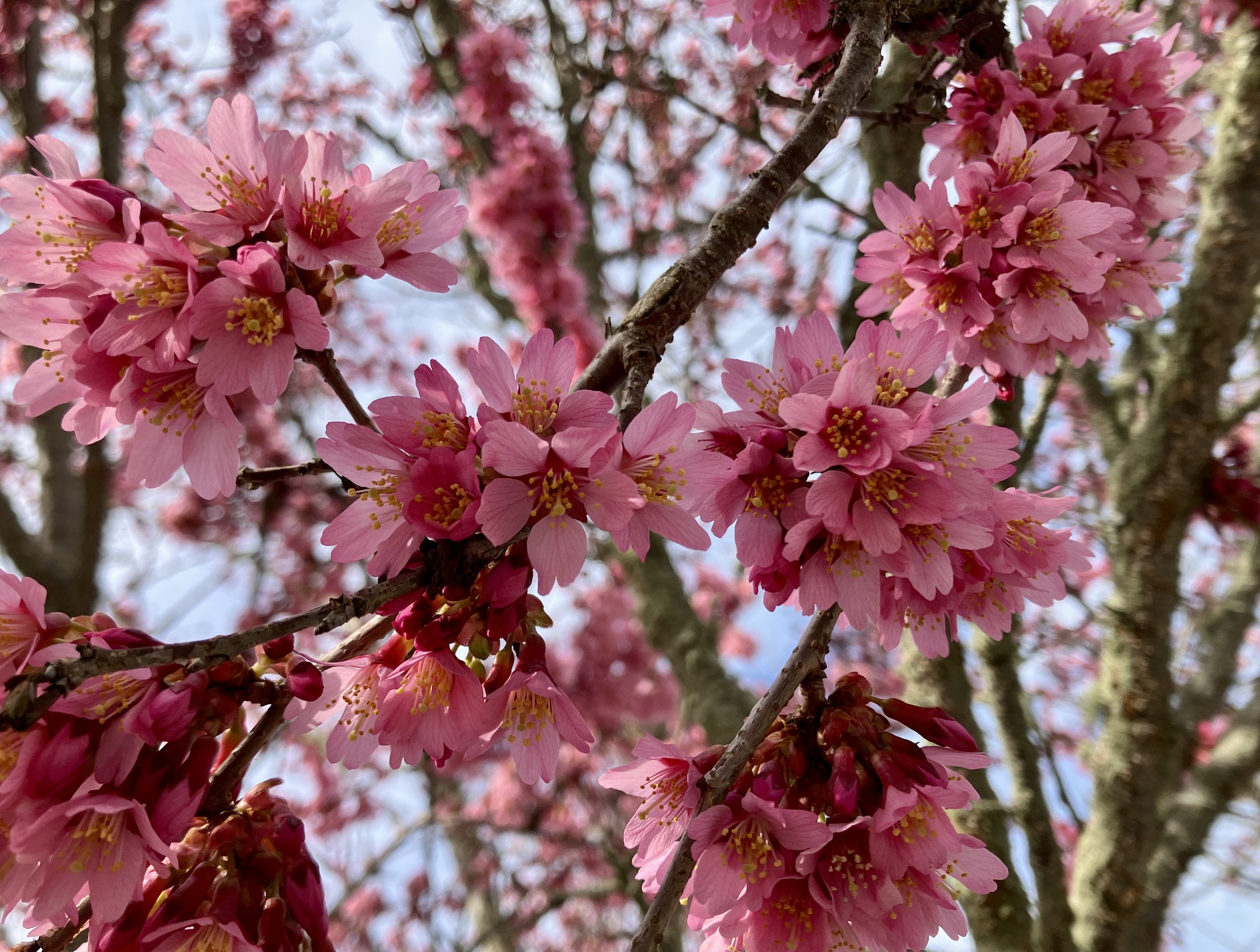
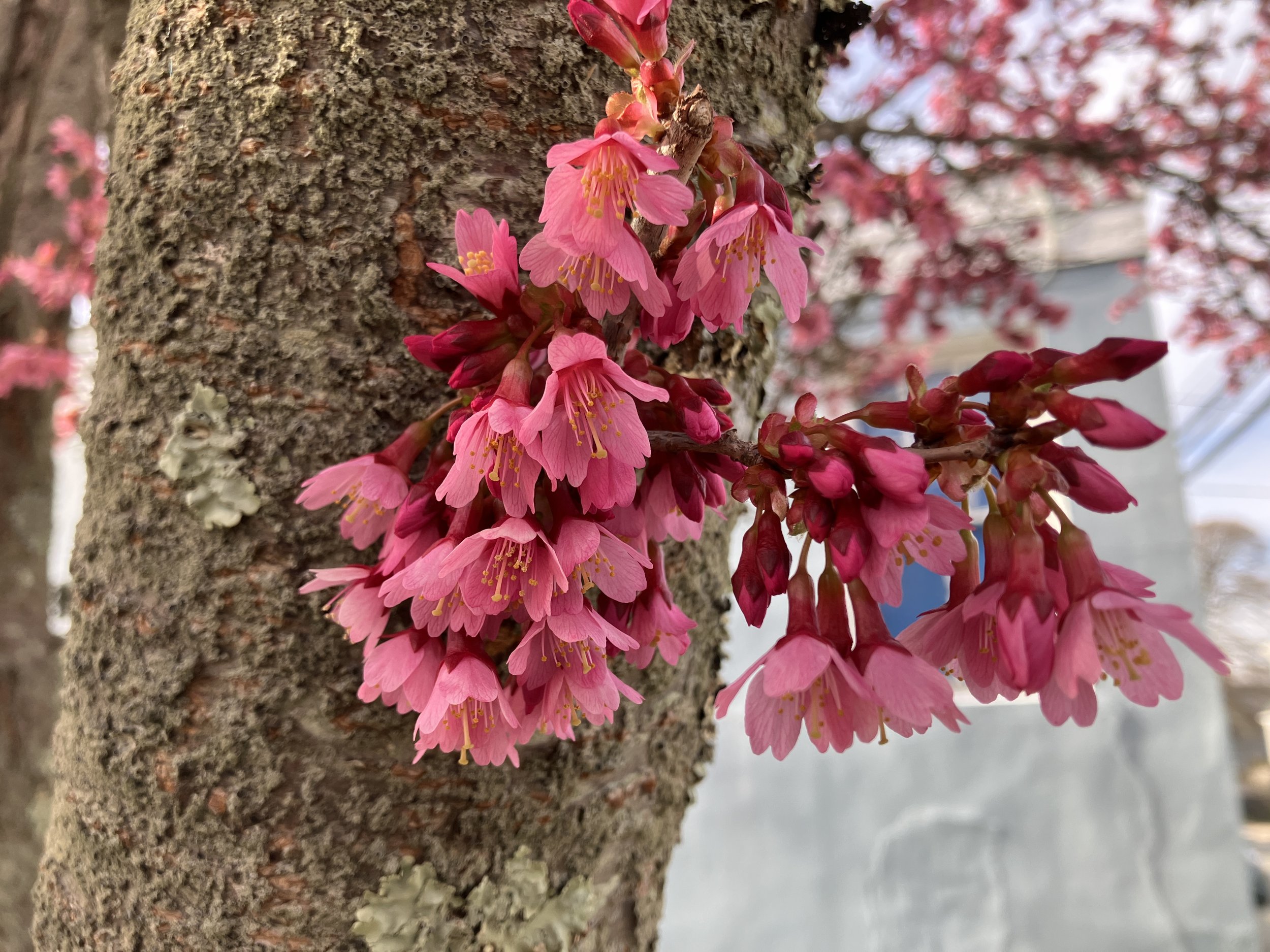
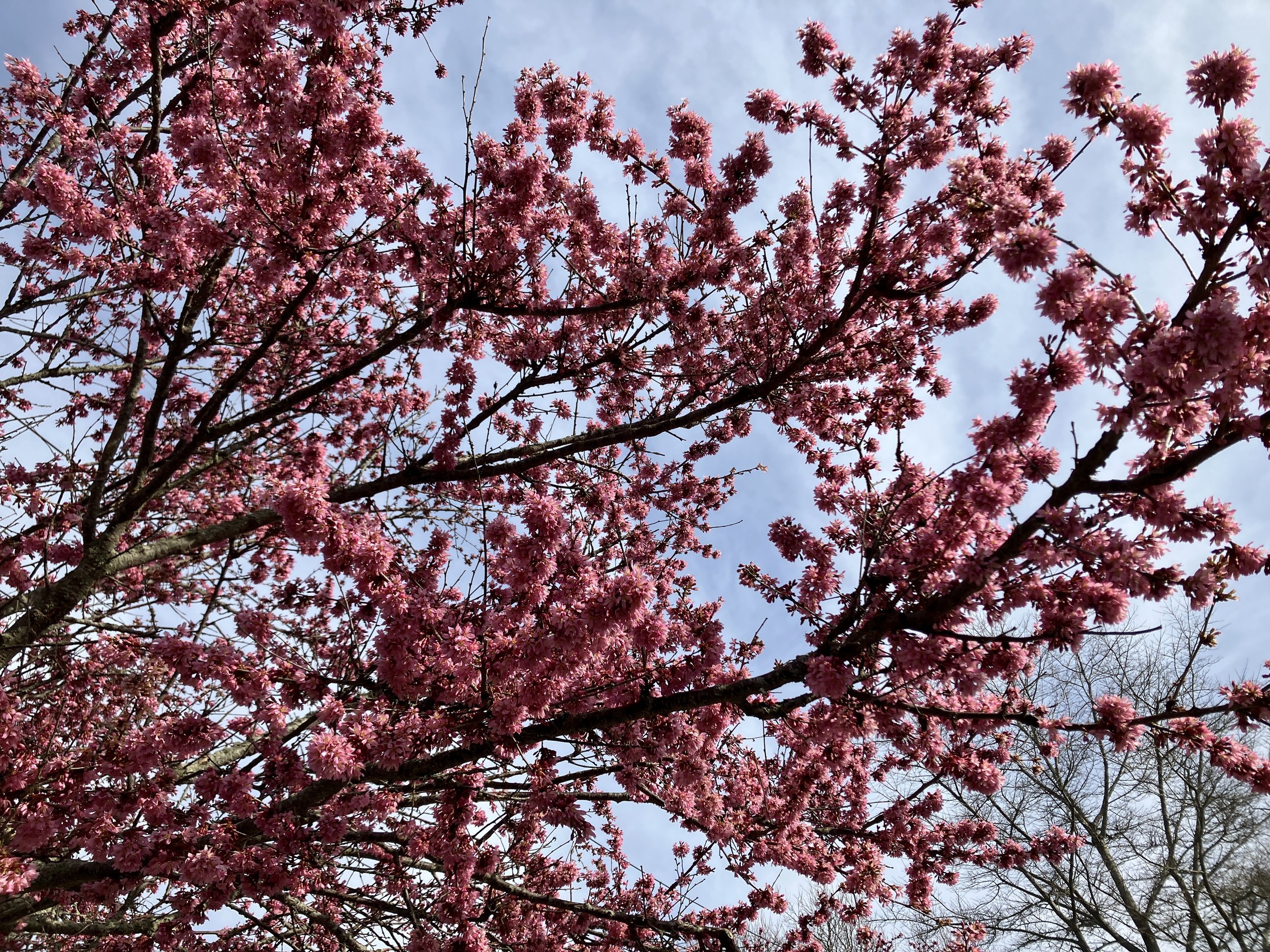
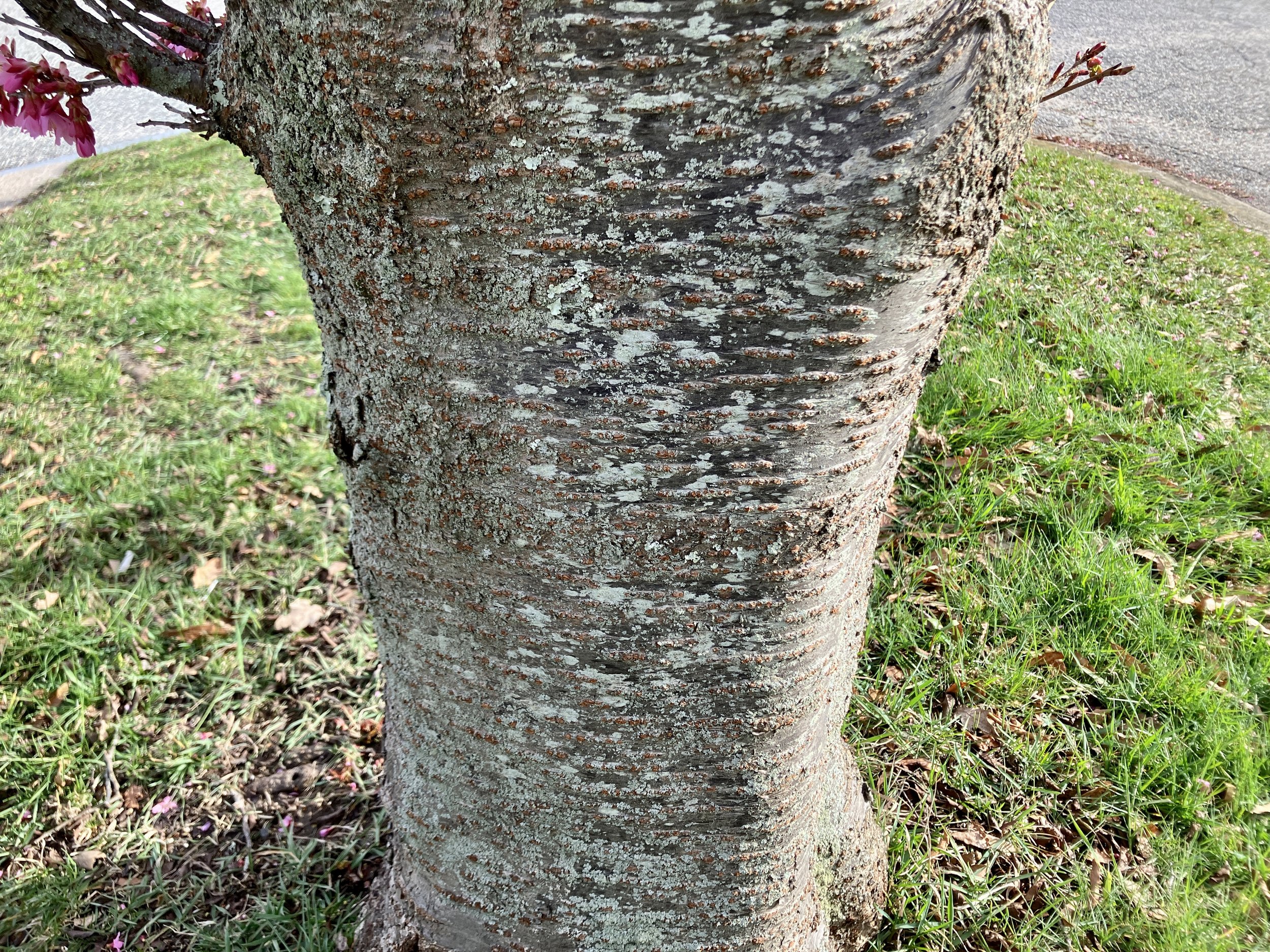
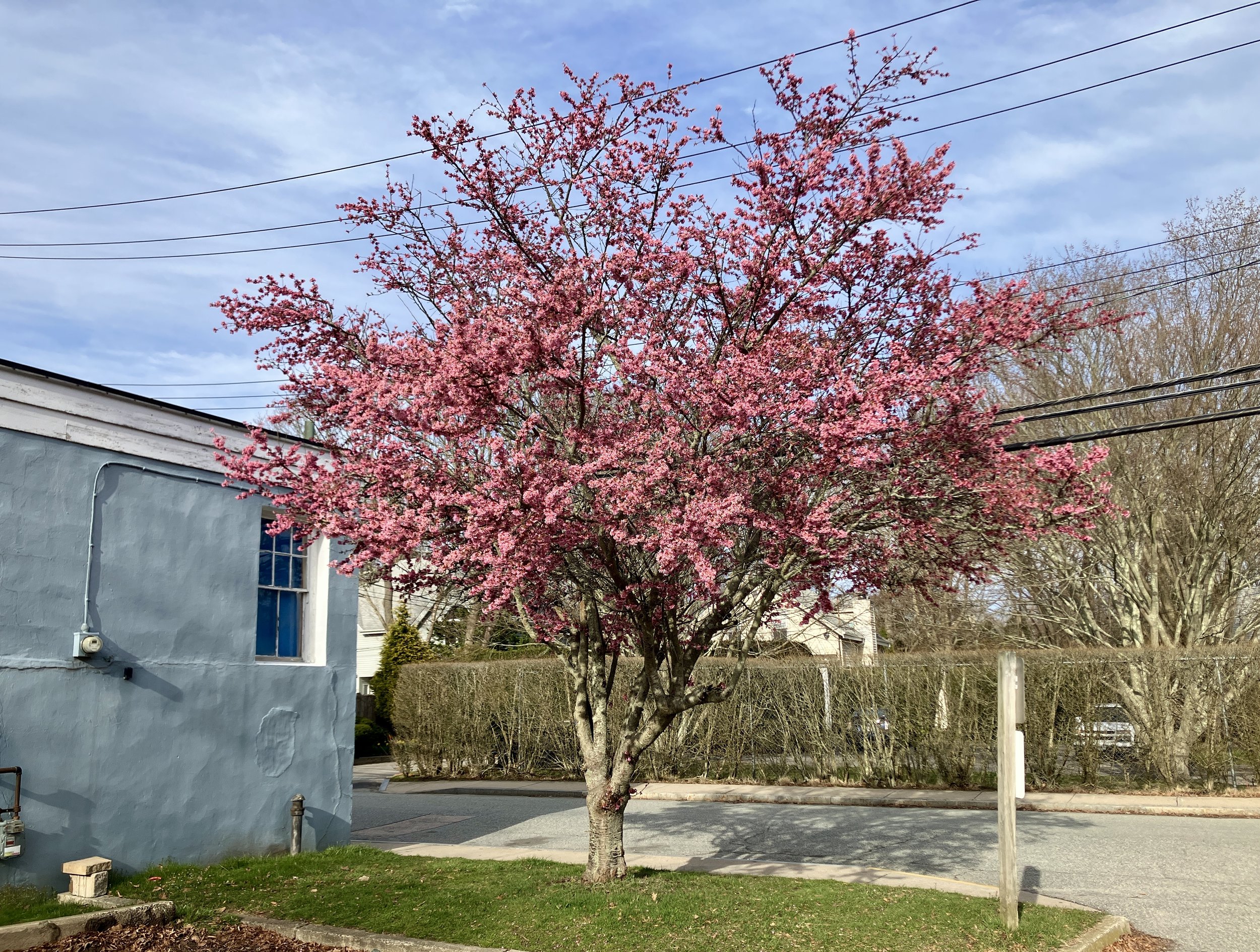
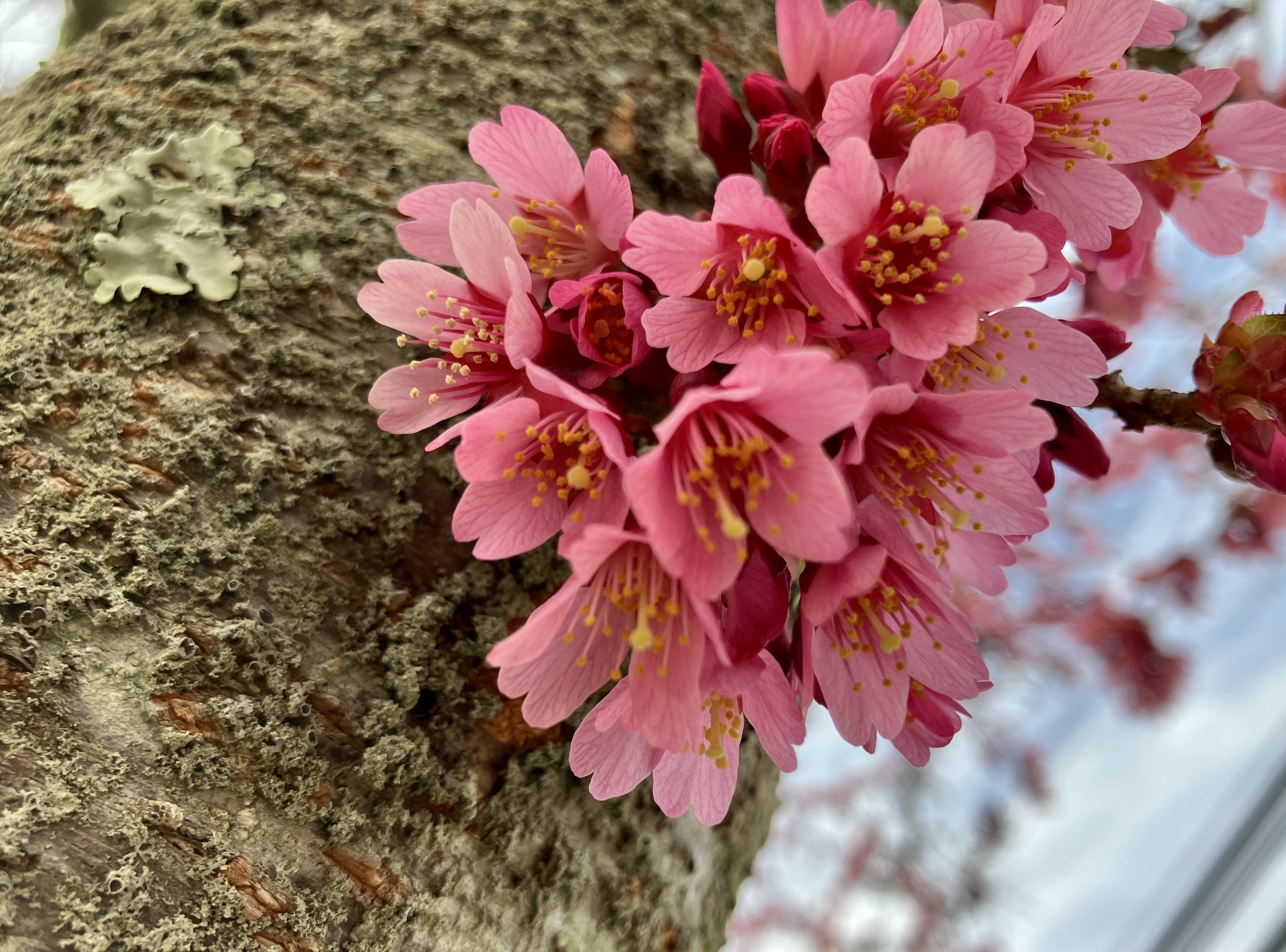
One of the first cherry blossoms to start off spring in Newport is the early Okame Cherry (Prunus ‘Okame’), which typically creeps into full bloom in Newport right before April checks in. It is an easily recognizable plant, both for its beautiful flower color and bloom period, thus becoming quite popular in Newport and greater southern New England. Its rapid growth rate, perhaps more than 2 feet per year, certainly has the growers readily producing it!
‘Okame’ originated in England, the result of a controlled cross between the Fuji Cherry (P. incisa) and the Formosan cherry (P. campanulata), raised by Collingwood Ingram in 1940. The tree was named in honor of the traditional Japanese goddess of good fortune and mirth. The goal of this hybridization project was to combine the bright pink to carmine red flower colors of P. campanulata (male parent) with the reliable cold hardiness of the P. incisa (female parent), which worked out pretty well in this instance. The tree received a gold medal from the Pennsylvania Horticultural Society in 1988 for its outstanding landscape qualities.
The vigorous ‘Okame’ grows quickly to over 25 feet tall, developing a sturdy upright habit in youth before broadening with age, but rarely becoming wider than tall. Flower buds start to color in mid to late March before opening at the end of the month. The petals are a nice carmine red coming out of bud, fading to more of a hot pink as the flowers open. The calyxes, which subtend the flower petals, are a dark maroon-red color and add to the overall color of the tree. Flowers develop on naked branches and show off for a little over a week. If the weather is cloudy and cool, the flowers may be effective for 10 days. Fragrance is minimal, but a fresh scent can be detected on warmer afternoons.
Though this tree has many great qualities, there are some major concerns, as well. Many individual trees around Rhode Island have been observed with severe infections of brown rot (Monilinia fructicola) and potentially other fungal organisms. Bud and twig death has been observed, with spent flowers browning and persisting with icky masses/secretions. Darkening and defoliating of emerging leaves has been observed in Newport. We have observed at least one tree succumbing to these issues. However, we have also seen at least 4 trees make full recoveries from what appeared to be very serious cases of the disease. The tree photographed for this article was in rough shape in the spring of 2022, with lots of twig dieback. It has rebounded very well.
Despite these concerning observations, ‘Okame’ has the potential to make a great addition to the landscape. A location with good airflow, lots of sun, and minimal radiative heat is recommended. Pruning of dead and diseased branches and twigs should be done at least twice a year. Removal of dropped foliage in the summer and fall should be prompt. Well drained soil is crucial. Brown rot can be treated with systemic and spray fungicides if applied just as flower buds are starting to swell.
Truly a spring stunner, ‘Okame’ is one of the most beautiful flowering cherries. Though we had some doubts with the disease issues, we feel that with good culture and care, it can thrive in the garden for many years. It is worth mentioning this cultivar also has an attractive reddish orange fall color.
